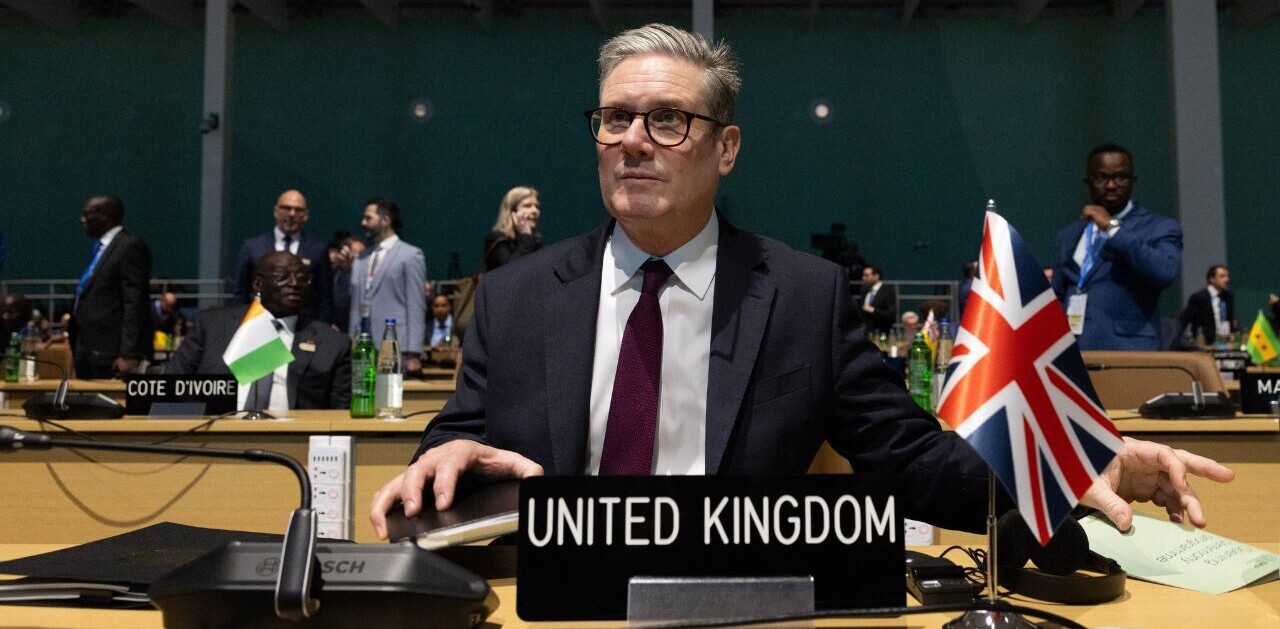
My company was positioned to grow rapidly in 2020 — but that meant raising growth capital remotely in a shifting VC landscape. We ended up closing a $15 million Series A without ever meeting an investor in person. Here’s what that process looked like, along with a week-by-week breakdown of how it progressed.
Let’s start by setting the scene. When I co-founded Stream in 2014, I could never have guessed how 2020 would transform our business. As makers of enterprise-grade APIs that engineering teams use to build in-app chat and social activity feeds, we saw explosive growth last year with our technology in fields like healthcare, edtech, and virtual event live streaming. Suddenly, we found ourselves seeking Series A funding to help us make the most out of that opportunity and deliver more value faster to our growing customer base.
That fundraising push came much sooner than we’d expected — and it came amidst the chaos of the global pandemic. I knew our team couldn’t afford to lose focus on ambitious product goals, and I wondered what challenges our newly remote reality would present in the world of venture capital.
As it turned out, many core principles of the fundraising process had not changed — but certain parts of the landscape look very different now, and they require an updated set of skills, tools, and expectations to navigate successfully.
With the odds for startup success already so low and with many other factors in flux right now, I hope to give fellow founders a leg up by sharing what I learned over the 12-week period that led us to close a $15 million Series A without ever meeting an investor in person.
Building a strong foundation
When I say it took us 12 weeks to close our Series A, I’m not counting the fundamental projects that I’ve been working on constantly with my co-founder, our board, and our leadership team ever since we completed the Techstars accelerator program five years ago.
At its core, fundraising is still about convincing investors that they’ll earn a strong return by investing in your company. It’s what you do when you’re not actively fundraising that sets you apart: talking to customers, solving their problems, shipping your product, and building a strong brand. I owe a debt of gratitude to the VCs and fellow founders who spent hours workshopping my pitch deck and introduced me to people who would understand the value of Stream’s products.
The best advice I can give at this stage is this: only talk to potential investors when you’re ready to actively raise money.
Others will tell you to keep in touch constantly, attempting to build and maintain investor relationships over time — but is that really the best use of your time when you have a product to build and customers to talk to?
Venture capital firms looking to beat their competition will still reach out to you before you’re ready. I’ve found that talking to them too early can distract you from following through on the goals that make your company attractive to investors in the first place.
Now is also a good time to mention that this article will be most helpful to established startups that have already received seed funding and are now moving into a new growth stage. There are many more variables at play in the seed stage, and I recommend starting with Brad Feld’s book Venture Deals and Alex Iskold’s blog Startup Hacks, along with educational resources from Techstars and Y Combinator.
Now let’s dive into the 12 pivotal weeks of my fundraising journey.
Weeks 1-2: Outreach & connections
By May 2020, we knew we were ready to talk seriously to investors. I reached out to VCs I knew from my time at Techstars NYC and in the startup world, and I asked our existing investors and community mentors to make as many introductions as they could.
I can’t overemphasize this step: it’s nearly impossible to connect with a new investor without a warm introduction from a trusted contact. If there ever was a time to leverage your network, this is it.
During these first couple of weeks, your hours of practice with the pitch deck will pay off. On initial calls, you’ll make the case for your value prop, mission, and vision as succinctly as possible. You’ll talk finance at a high level. I recommend rating VCs in terms of desirability and starting with your second tier for some practice before pitching the top firms.
At this point in the process, the biggest difference between traditional fundraising and remote fundraising is the sheer number of investors with whom you can meet. In the past, when I’d visit VC firms’ offices in person, travel and logistics limited me to two meetings per day — maybe three if their locations and schedules lined up perfectly. In the spring of 2020, I set a personal record of eight VC meetings in one day.
Meeting with more VCs in a compressed time period isn’t just efficient — it can also work in your favor by creating competition between firms. When the time comes for negotiations, one term sheet isn’t enough. You’ll need at least two in front of you in order to have a competitive edge.
The increased VC exposure is great, but remember that the converse is also true: investors are talking to many more founders than they could in the past, so the bar for your company to stand out is higher. In this sense, the extensive review and revision of your pitch deck and the warm introduction from a trusted contact are even more consequential than before.
Not every conversation will get results. From a founder’s perspective, it’s not always clear which niches within tech a VC focuses on or how yours may or may not fit into their portfolio strategy. Don’t get discouraged — I see a lot of first-time founders bogged down by VC opinions.
Remember that practically every unicorn out there was once rejected by dozens of VCs during early rounds and that it’s difficult for anyone to predict which startups will succeed.
Weeks 3-4: Deeper conversations
After that first round of intro calls, we started working more closely with investors who expressed interest. This process doesn’t have to be linear, though, and without the need for in-person meetings, it’s even more flexible. We continued to have new intro calls all the way up to the signing of our term sheet.
As we got deeper into talks with interested VCs, we created a virtual data room and worked on aggregating and sharing more granular financial data. I have to admit that we hit some roadblocks here — it was harder than we expected to get accurate financial reporting out of our billing system.
Billing systems and finance present a dilemma for many tech-first startups: in your earliest stages, you’re likely putting all your resources into product development and not into building out these types of systems. But if you grow as planned, you’ll eventually need them, both for scaling internal operations and for growth stage fundraising rounds.
Somewhere along the way, you’ll need to prioritize financial reporting systems. I’d suggest doing it sooner than we did so you’re prepared to answer investors’ questions with less manual digging.
One more note on talking to investors in this exploratory phase: it doesn’t have to be uptight and overly stressful.
You’ll find guides that recommend obsessing about formalities like attire, your Zoom background, and more. The idea is that a degree of old-school polish will set you apart from so many others pitching their companies from behind the same device’s screen. It’s not a bad idea, but it wasn’t my experience.
If anything, virtual meetings gave me a chance to be more myself and listen more carefully, so I could answer investors’ questions openly and honestly instead of trying to recite prepared responses. Do what feels right to you, but I think a natural balance of professionalism and approachability works well here.
Weeks 5-6: Customer testimonials
At this point, we were having multiple followup calls with several very interested VCs, and it came time for them to talk to our customers. Some of our largest customers were extremely gracious about finding time to talk to our potential investors, and I’m grateful for that.
If you’ve gotten this far in the startup ecosystem, chances are you’ve figured out how to make sure customers’ priorities are reflected in your roadmap.
Now, the relationships you’ve built with those customers become even more important. As with in-person fundraising, your ability to connect investors with satisfied customers will be critical to your success.
Weeks 7-8: Choosing the right fit & signing the term sheet
By the end of month two, we had received four offers. We found that GGV Capital’s areas of focus and expertise were a remarkable match for our vision, so we ultimately signed their term sheet.
GGV is deeply involved in the new wave of developer-driven software, recognizing the power of modern developer tools to streamline and democratize software engineering processes. A number of top-tier companies in their portfolio — Agora, HashiCorp, Kong, Slack, and Zendesk, to name a few — provide similar services to ours at the intersection of developer tools and chat/messaging.
And as an added bonus, we found that many of GGV’s other portfolio companies had a need for a chat API product like ours. If we can help solve problems for those companies, we’ll be well-positioned to hit our growth metrics for future fundraising rounds.
Remember that as things start to get exciting, it’s easy to feel pressured by the fast pace of new developments and offers. Now, more than ever, is the time to slow down and make sure you get everything right.
Just as your VC firm has been doing their due diligence to research your company, you’ll want to talk to other founders in their portfolio and get a better feel for the firm’s reputation beyond what you see on paper.
We checked in with many of GGV’s portfolio companies — even some that had failed — and everyone was extremely positive about their collaboration with GGV. We were impressed by this, as most larger VC firms have several founders who are upset with them.
Weeks 9-12: Final steps
The signed term sheet creates a framework for the deal to go through, but there’s still more work to finalize a longer-form legal contract and receive your cash deposit. This process took us about four weeks.
With the bulk of the fundraising work complete for now, a (virtual) champagne toast was in order. Of course, the work of following through on our mission and vision and delivering promised growth has still only just begun.
The future of tech fundraising
Startups and the venture capital ecosystem will continue to face uncertainty as global events progress and new technology evolves to meet our changing needs. I hope what I learned while fundraising in 2020 will help teams working to build that technology secure the resources they need to grow and succeed.
Contrary to some dire predictions, funding for creative technology solutions hasn’t dried up — but a few thoughtful tweaks to your virtual fundraising process can greatly increase your chances of closing a deal.
Get the TNW newsletter
Get the most important tech news in your inbox each week.





